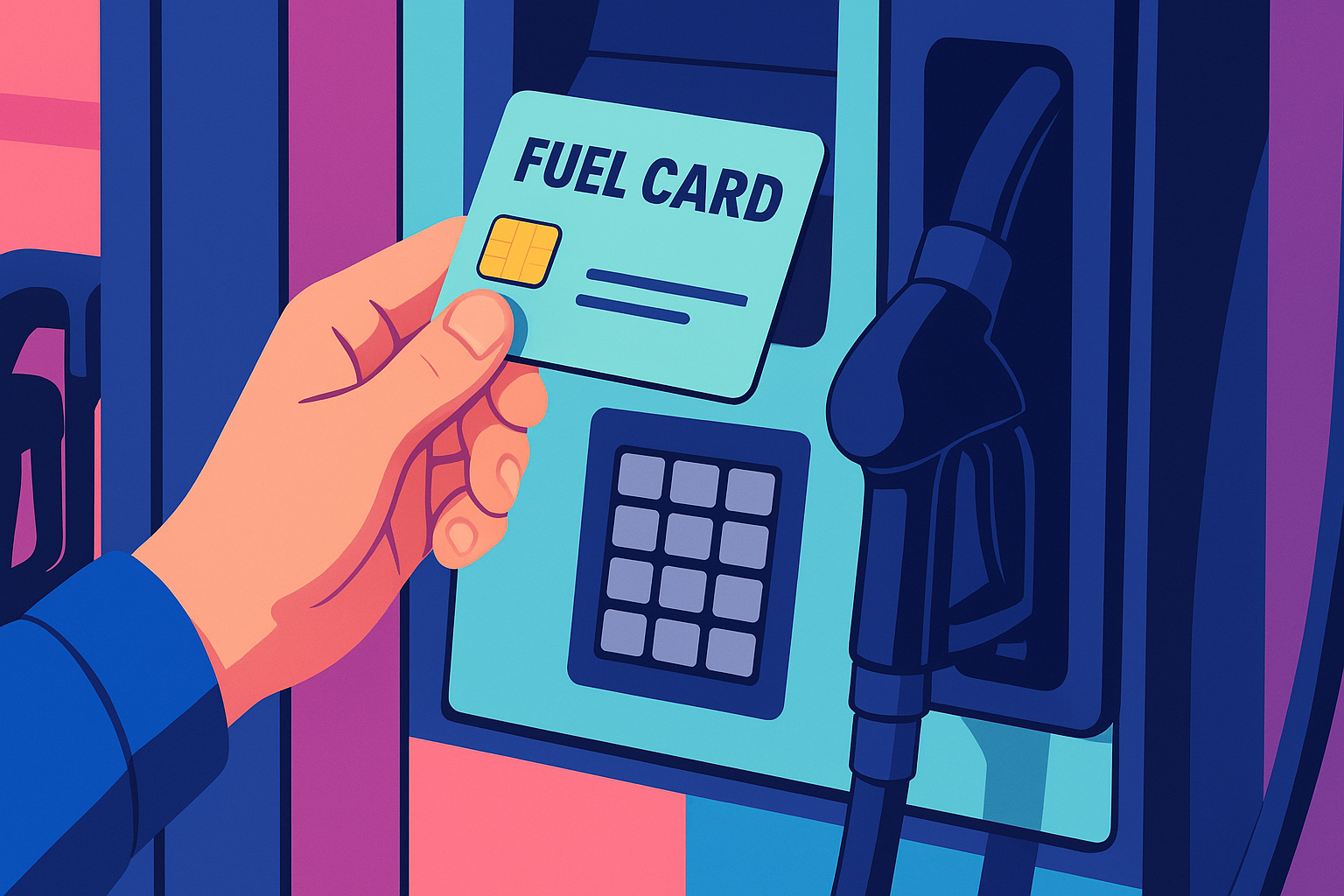Torben Robertson
8 mins
Fleets of company cars vs. FAVR reimbursement programs
Fleet and FAVR are two different vehicle programs for your traveling workforce. Both programs give your drivers access to a car, but they accomplish it in different ways.

Speak to an Expert
Book a CallFleet vs. FAVR
What are the differences between fleet and FAVR reimbursements?
A fleet is a set of company cars, owned or leased by the company in question. A fixed and variable rate (“FAVR”) reimbursement program is basically an employee-owned fleet: a system where employees drive their personal cars for work, and get reimbursed for it.
Fleet
- Company owns or leases cars
- Company supplies said cars to employees for work use
- Company pays for vehicle expenses
- Company assumes all insurance risk, including for after-work accidents
FAVR
- Employees own or lease cars
- Employees bring personal vehicles to work
- Employees pay for expenses, then get reimbursed
- Employees assume personal use insurance risk
What are the benefits of switching to a FAVR mileage reimbursement model from fleet?
Switching to a FAVR mileage reimbursement model from fleet has many benefits that can be felt throughout any organization. Cost savings, reduced risk and increased flexibility are the most notable advantages – making it easier for companies to reduce or increase their workforce without having the burden of assets. Additionally, with a FAVR program organizations get access to unprecedented freedom in how they manage their employee reimbursements.
Reasons to switch to FAVR:
- Cost savings: FAVR is less expensive than fleet
- Risk reduced: companies aren’t responsible for off-the-clock employee collisions
- Scale up, scale down: easily add and remove drivers from FAVR programs vs. having to sell company cars or let them sit idle while waiting for new employees to occupy them
- Flexibility of FAVR: FAVR is far more customizable to different regions and employee needs than fleet
- Employee choice: younger generations of drivers don’t like to be told what car they will drive, and would like to pick their own vehicle, one that fits with their life
What are all the costs associated with fleet?
It can be difficult to nail down the exact costs associated with running a fleet of vehicles for business purposes. It’s more than just the monthly lease payments and depreciation—there are also management fees, taxes, maintenance expenses and other variables that all make up what you’ll owe each month. Understandably so, these factors add complexity when trying to budget for an operational fleet.
Fleet management companies can often come with hidden costs like interest, insurance, maintenance and fuel – all of which should be factored in when you’re making your decision. But there are other “soft” dollar costs that need to be considered too: downtime due to repairs or during inter-employee vehicle transfers.
The great thing about FAVR is these individual expenses become a single cost bill—so no more unpredictable costs!
Fleet costs
- Depreciation
- Management fee if you’re using a company + interest
- Insurance
- Maintenance
- Repairs / accidents
- Fuel
- Downtime
FAVR costs
- Fixed reimbursement for fixed expenses
- Variable reimbursement for mileage expenses
Fleet Risk and liability
Fleet management has inherent risks and liabilities associated with it. For example, if an employee crashes their company car on the way home from dinner on Friday, or at soccer field parking lot on Sunday morning, then you’re still responsible for covering any damages or other costs that may arise. These risks are not always easy to predict or prepare for — they come as part of being in charge of a fleet! These concerns should give pause to anyone looking into running one.
Fleet vs. FAVR reimbursement program liability
With FAVR programs, employers can rest assured that their insurance risk is substantially reduced compared to company owned fleets.
Employers whose employees are driving their own car on company business can rest easy knowing that personal insurance will be used as the first line of defense before any liability falls onto the organization’s Fleet or FAVR reimbursement program. An added layer of protection is available for those using their own vehicle.
Companies are also more likely to be targeted because of the deep pockets theory in legal and insurance claims. Deep pockets theory in insurance claims states that individuals who have the most money are more likely to pay for damages, as opposed to those with fewer resources who might declare bankruptcy. Insurance companies strategically pursue these deep pocketed targets first should an accident occur and significant monetary losses result.
Scaling FAVR programs up and down
It’s easy to take employees on and off a FAVR program if need be. Not so with fleet. What happens if you let go of 20 people? You’re stuck with leases on 20 extra fleet vehicles that your company isn’t using. With FAVR, you just turn off the reimbursement payments.
Why would an employee want a FAVR reimbursement over a company car?
FAVR reimbursement offers employees the freedom to choose their preferred mode of transportation. Rather than forcing them into a company car, you can give your staff the power to select vehicles that fit their lifestyle and budget. Employees can choose to either subsidize their lifestyle, or pocket a few extra dollars.
To ensure employee satisfaction, after transitioning off fleet, you can build an attractive program that mirrors what you already offer. For example, if your employees currently drive Jeep Cherokees, use those as part of your reimbursable option in the FAVR system. Any kind of car can be programmed into a FAVR program as a vehicle type or program standard vehicle. Then, user reimbursements are based on that configuration.
Employees dislike personal use chargebacks
Many companies utilize personal use chargebacks to manage employee expenses. However, it can widely vary across organizations—from non-existent up to $550 for some of the larger medical device businesses! Depending on what employees opt for, they may be stuck paying $150-200 a month for a car they don’t want to drive.
Employees want to select vehicles that fit their lifestyle
Younger generations of employees don’t want to be told what to drive. Especially if you have specific needs with your car: for example, when you have a young family. Being given a Chevy Malibu by your employer is no use if you have to pay a personal use chargeback for it, at which point you don’t have the money to put toward a second car. So moving to a FAVR program provides employees with the opportunity to choose a car that they actually want, that fits their specific needs, and to get reimbursed for using it.
Business use of a personal vehicle means that employees are getting a significant amount of their vehicle expenses covered—often between 70 and 75%. So if they need a minivan, well now they have a car that their kids will benefit from, 70+% covered by their employer. It’s a win-win.
How to transition off of fleet
Companies have been utilizing different strategies to get rid of their fleet vehicles. One strategy is to transition their company-owned vehicles into employees’ hands.
Some transitions involve selling used cars with 20,000 – 80,000 miles on them back to the staff at a rate lower than what KBB assessed as its fair trade in value. In those cases, employees are often excited by having instant equity when they make the purchase of the vehicle.
Other companies simply sell off large fleets and give one time bonuses of, for example, $2,500, for each employee who partakes in this type of transaction. This sum can be put toward the purchase of a new or used vehicle to be used for work.
Employees joining the company down the road won’t feel hard done by when they get a FAVR reimbursement program. In fact, these programs are broadly appreciated by employee drivers. The key is just to get the messaging right when it comes to that first line of employees who will be transitioned out of company cars and onto an employee-owned model.
Conclusion
In conclusion, fleet and FAVR reimbursements are two different methods of providing vehicles to employees for work use. Fleet involves the company owning or leasing cars while a FAVR program is an employee-owned fleet system where they bring their personal vehicles to work and get reimbursed.
Transitioning off of a fleet can be done by selling large fleets and offering employees one time bonuses, which has the benefit of employees having more choice re. vehicle type no personal use chargebacks on a FAVR model vs fleet.
Switching from fleet to a FAVR program offers savings, reduced risk, flexibility in scaling up/down workforce without an asset burden, and access to freedom in managing employee reimbursement.
Furthermore, using a FAVR program significantly reduces liability associated with individual team members driving the company car for personal reasons during off-hours, which may arise through a typical fleet system. With all these benefits in mind, it sounds like transitioning off of a traditional fleet system may be the way forward for many businesses. If you’re ready to take the first step towards this transition, give Cardata a call today and let us help you experience the full benefits of switching from fleet to FAVR reimbursements.
Disclaimer: nothing contained in this blog post is legal or accounting advice. Consult your lawyer or accountant and do not rely on the information contained herein for any business or personal financial or legal decision making. While we strive to be as reliable as possible, we are neither lawyers nor accountants. For several citations of IRS publications, on which we base our blog content ideas, please always consult this article: https://www.cardata.co/blog/irs-rules-for-mileage-reimbursements. For Cardata’s terms of service, go here: https://www.cardata.co/terms.
Share on:


